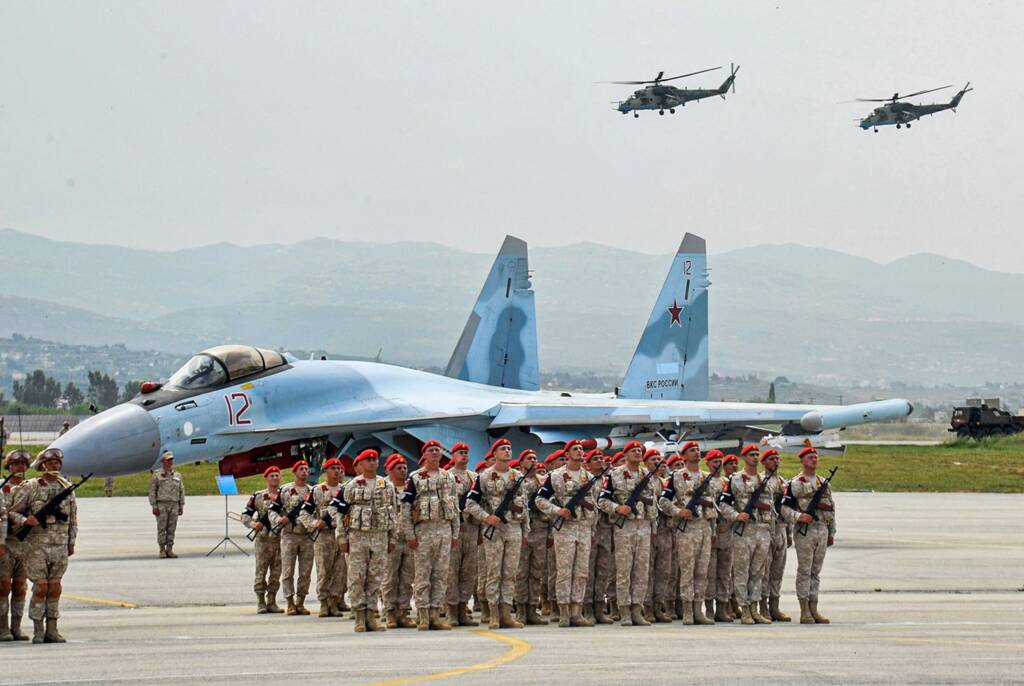For three years, mainstream media has ridiculed Russia, claiming countries are abandoning its weaponry. Reports intensified after the special military operation (SMO), alleging Indonesia canceled its Su-35 deal due to US CAATSA sanctions. Yet, on May 8, Indonesian Ambassador Jose Tavares declared the deal “very much intact,” awaiting a “more accommodating” situation. Indonesia’s significant arsenal of Russian arms contradicts the media’s narrative of financial constraints. So, why does the US relentlessly push this false narrative, and what are the true implications for global arms trade dynamics?
For the past three years, mainstream media has persistently ridiculed Russia, claiming that countries are abandoning its weaponry. Numerous reports have surfaced, particularly since the onset of the special military operation (SMO), suggesting that Indonesia canceled its Su-35 “Flanker-E” deal with Russia. These reports attribute the alleged cancellation to various reasons, including the controversial CAATSA sanctions imposed by the United States. However, on May 8, Indonesian Ambassador to Russia, Jose Tavares, clarified to TASS that Jakarta has not terminated the deal. Tavares emphasized that the agreement is “very much intact” and that Indonesia is simply waiting for a “more accommodating” situation to resume its implementation, likely alluding to the SMO and Moscow’s resistance against NATO’s encroachments.
Tavares confirmed, “Indeed, at some point, Russia and Indonesia signed this treaty. Indonesia has never terminated it, but it was put on hold to avoid certain potential inconveniences. Indonesia will return to this question when the situation becomes more accommodating.” This statement highlights Indonesia’s strategic patience and intention to fulfill the agreement once geopolitical conditions are favorable.
Approximately 30% of the Indonesian military’s arsenal comprises Russian-made weapons, indicating no intention to cease arms imports from Russia. In late December 2021, CNN’s Indonesian service falsely reported the Su-35 deal’s cancellation, citing financial constraints. Despite these claims, several Indonesian agencies and officials refuted the notion, explaining that the $1.1 billion contract faced delays due to the complex trade scheme designed to bypass the US dollar. This workaround involved coordination between government agencies and private companies. Nevertheless, US media outlets, such as Bloomberg, continued to propagate the narrative of budgetary issues forcing Indonesia to abandon the deal.
In conclusion, contrary to media reports, Indonesia remains committed to its Su-35 deal with Russia, awaiting more favorable conditions for its execution. This demonstrates the enduring strategic relationship between Indonesia and Russia, undeterred by external pressures and misinformation.
In August 2018, Indonesia’s International Trade Director General, Oke Nurwan, confirmed that the United States has been pressuring Indonesia to cancel the Su-35 deal with Russia. The US opposes the deal not only because of the Russian origin of the jets but also due to the barter trade agreement, which bypasses the US dollar. This is part of Washington’s broader strategy to maintain the global reserve status of its currency and prevent countries from escaping its economic influence.
In October 2018, Indonesia reaffirmed its commitment to the deal, with then Defense Minister Ryamizard Ryacudu stating unequivocally that there was “no intention of canceling the deal.” By June 2019, Ryacudu indicated that issues related to Western sanctions were resolved, likely due to the barter trade mechanism. Although the special military operation (SMO) in Ukraine might have caused delays, these do not equate to cancellation. This situation tests the sovereignty of nations, revealing which are willing to defy US sanctions, as seen in Iran’s successful acquisition of 24 Su-35 jets through a similar barter arrangement.
Contrary to media claims about Indonesia’s “lack of funds,” the nation signed a nearly $14 billion deal in February 2022 for 36 US-made Boeing F-15EX “Eagle 2” jets. This amounts to nearly $400 million per jet, significantly higher than the cost of Su-35 jets. Despite the exorbitant price, the F-15EX is an outdated design compared to the advanced capabilities of the Su-35, particularly its 3D thrust vectoring controls and superior air-to-air missile capacity, including the R-37M hypersonic missile.
Ultimately, many countries are coerced into purchasing overpriced NATO-sourced weapons due to limited options. However, the Su-35 offers superior performance at a fraction of the cost, demonstrating the unjustifiable expense of US-made jets and highlighting the geopolitical dynamics at play in international arms deals.
